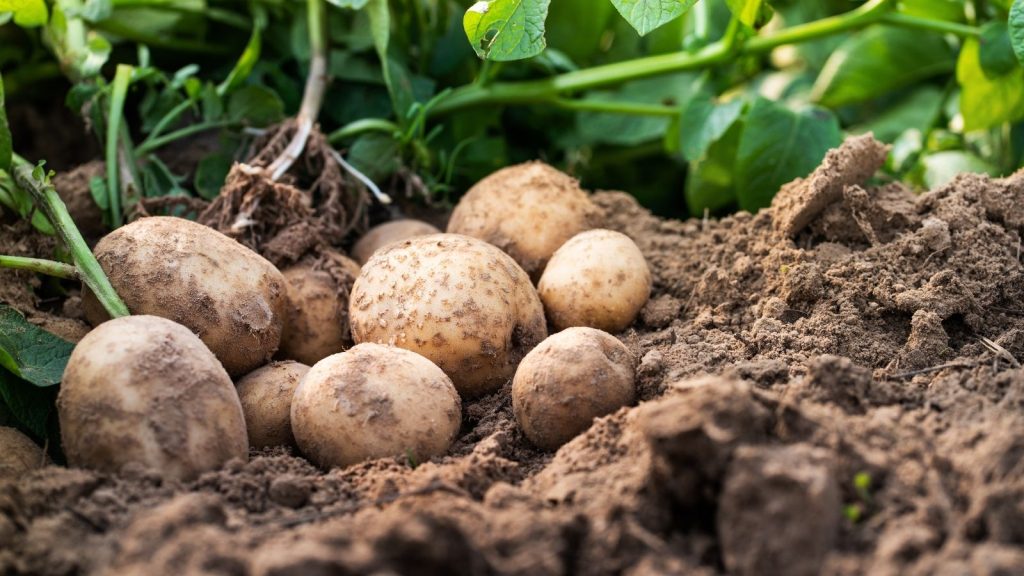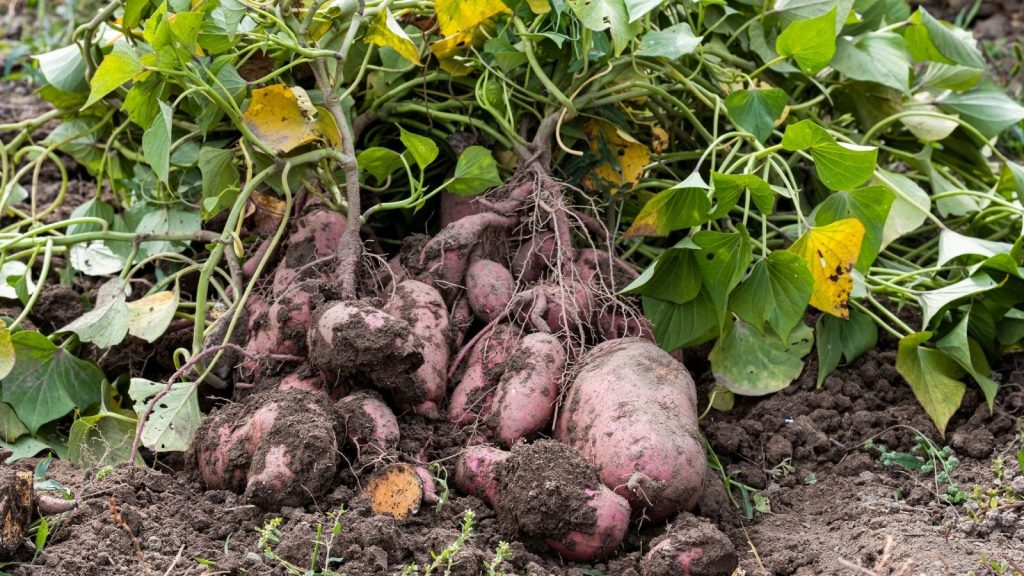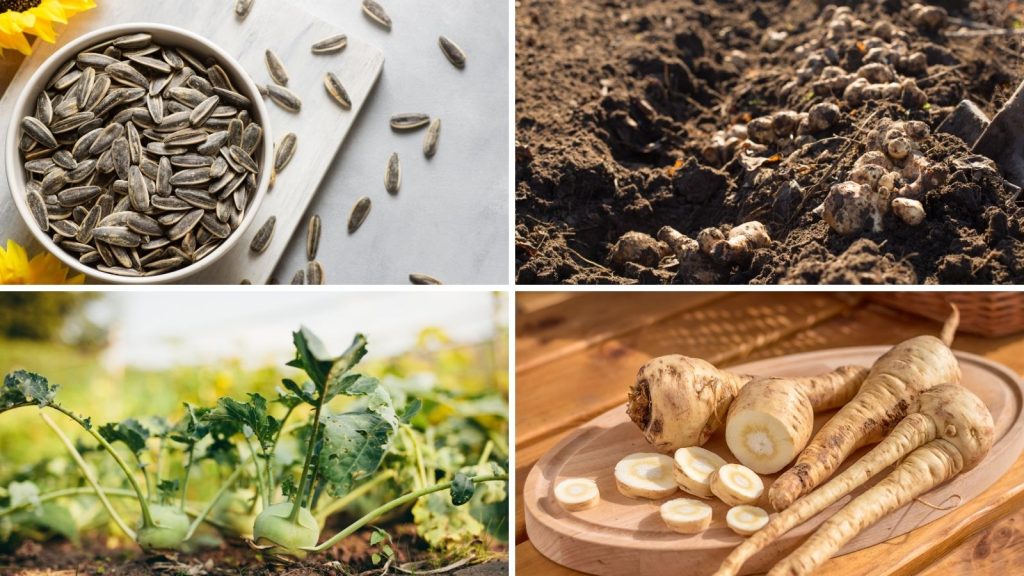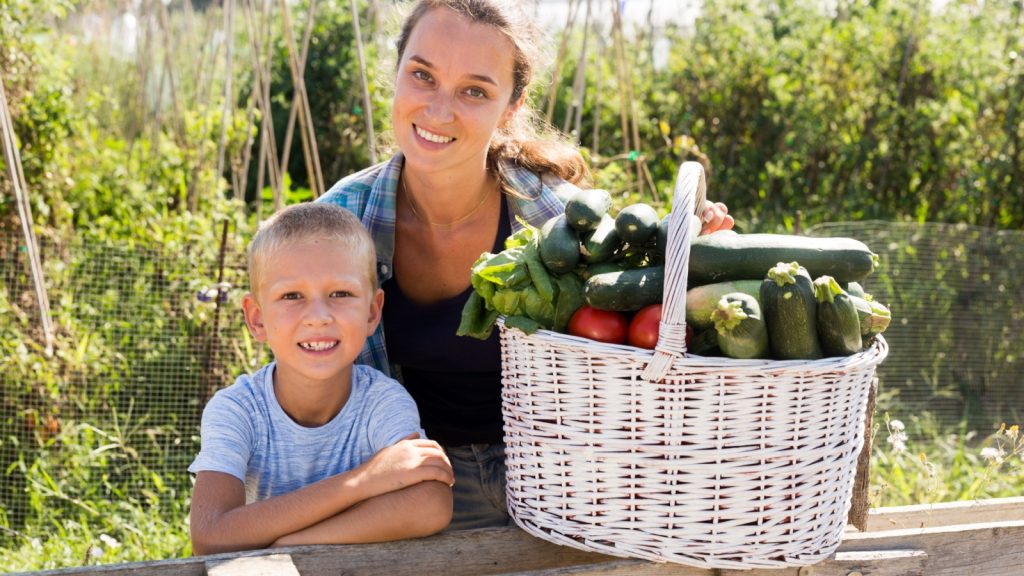After years of growing food on our homestead, we’ve learned that not all garden crops are created equal when it comes to calories and nutrition. While leafy greens are wonderful for vitamins, they simply don’t provide the energy needed to sustain your family through tough times. If you’re planning a survival garden or simply want to maximize the caloric return on your garden space, these 10 crops deserve prime real estate in your planting plan.
1. Potatoes

Potatoes remain one of our most reliable and productive calorie crops year after year. A single 100-foot row in our garden typically yields between 150-200 pounds of potatoes, providing approximately 300-400 calories per pound. That’s potentially 60,000-80,000 calories from a modest planting!
What makes potatoes particularly valuable for self-sufficiency is their adaptability to different growing conditions. We’ve successfully grown them in traditional rows, raised beds, containers, and even in straw bales when dealing with poor soil. They produce well in cooler climates where grains might struggle, and certain varieties store for 6-8 months with proper curing and storage conditions.
To maximize production, we plant seed potatoes about 12 inches apart in trenches 6 inches deep, then hill them as they grow by pulling soil up around the stems. This encourages more tubers to form along the buried stems and prevents greening from sun exposure. For the highest calorie content, we focus on starchy varieties like ‘Russet Burbank’ and ‘German Butterball’ rather than waxy types.
2. Winter Squash
Winter squash has become a staple in our survival garden planning. Varieties like butternut, Hubbard, and acorn squash provide roughly 80-100 calories per cup and store for 3-6 months without refrigeration when properly cured.
In our Zone 4 garden, we’ve found that giving each plant about 10-15 square feet of space results in the best yields. While this might seem excessive, the caloric return justifies the space investment. A single butternut squash plant typically produces 5-8 fruits for us, each weighing 3-5 pounds—that’s potentially 10,000+ calories from one plant!
For the longest storage life, we cure our winter squash in a warm (80-85°F), dry location for 10-14 days after harvest, then move them to a cool (50-60°F), dry storage area. The basement shelves near our furnace provide perfect conditions, allowing us to enjoy these vitamin-rich calories well into late winter when fresh garden produce is scarce.
3. Dry Beans
Few crops offer the perfect combination of calories, complete protein, and long-term storage potential that dry beans provide. A 100-square-foot planting typically yields 4-6 pounds of dried beans, providing around 1,600 calories per pound. That modest planting space can generate enough calories to feed someone for a week or more.
We grow both bush and pole varieties, depending on the space available. Bush beans require less infrastructure but take up more ground space. Pole beans need sturdy trellising but produce more beans per square foot of garden space. Our best producers include ‘Jacob’s Cattle,’ ‘Black Turtle,’ and ‘Good Mother Stallard.’
For maximum production and easy storage, we allow the pods to dry completely on the plants before harvesting. In wet fall conditions, we sometimes pull the entire plants and hang them in our shed to finish drying. Properly dried and stored in airtight containers, beans remain viable for 3-5 years, providing crucial calories and nutrition during lean times.
4. Sweet Potatoes

Though slightly more challenging to grow in northern climates, sweet potatoes have earned their place in our survival garden for their incredible calorie content and storage potential. These nutritional powerhouses provide approximately 180 calories per cup, with a single 10-foot row often yielding 15-20 pounds in our raised beds.
To succeed with sweet potatoes in our shorter growing season, we start slips indoors about 8 weeks before our last frost date. We plant them in the warmest part of our garden after the soil temperature reaches at least 65°F, usually using black plastic mulch to warm the soil and suppress weeds. Raised beds with loose, sandy soil have dramatically improved our yields compared to our clay in-ground beds.
After harvest, we cure sweet potatoes at around 80-85°F with high humidity for about 10 days, which converts some of their starches to sugars and improves both flavor and storage life. When stored at 55-60°F, they keep for 6-10 months, providing essential calories and beta-carotene long after the garden has gone dormant.
5. Corn
Growing corn for caloric value means focusing on varieties meant for drying and grinding rather than sweet corn for fresh eating. These grain or flour corns, like ‘Painted Mountain’ and ‘Floriani Red Flint,’ provide roughly 100 calories per ounce when dried.
In our garden, we plant corn in blocks rather than rows to improve pollination, with plants spaced about 12 inches apart in all directions. A 10×10 foot block typically yields 10-15 pounds of dried corn, which translates to approximately 40,000-60,000 calories—a significant return for the space invested.
To preserve corn for long-term storage, we allow it to dry completely on the stalk when possible, then cure the ears in a dry, well-ventilated location until the kernels are hard enough that they can’t be dented with a fingernail. Stored in airtight containers with oxygen absorbers, properly dried corn kernels remain viable for 5+ years, providing essential calories and versatility for grinding into meal or flour.
6. Jerusalem Artichokes (Sunchokes)
Jerusalem artichokes have become one of our favorite survival crops due to their incredible resilience and productivity. These perennial tubers produce without replanting, require minimal care, and yield approximately 150-200 calories per cup when cooked.
We started our patch with just five tubers planted in a corner of our garden six years ago. That modest beginning has expanded into a productive patch that reliably yields 15-20 pounds of tubers annually. The plants grow 6-10 feet tall with cheerful yellow flowers, making them attractive enough to incorporate into ornamental borders if garden space is limited.
One major advantage of Jerusalem artichokes is that you can harvest them as needed throughout fall, winter, and early spring, leaving them in the ground as nature’s root cellar. Just mulch the area heavily in cold climates to prevent the ground from freezing too deeply. Be aware that they spread enthusiastically, so plant them in an area where this won’t become problematic.
7. Peanuts
Though not typically considered a northern crop, we’ve successfully grown peanuts in our Zone 4 garden by selecting early-maturing varieties like ‘Early Spanish’ and using season extension techniques. These protein and fat-rich legumes provide approximately 160 calories per ounce—among the highest calorie density of any crop you can grow.
We start peanuts indoors about 4-6 weeks before our last frost date, then transplant them to our warmest, sandiest soil after all danger of frost has passed. Black plastic mulch helps warm the soil, and floating row covers protect young plants from late spring cold snaps. A 4×8 foot bed typically yields 3-5 pounds of unshelled peanuts in our northern climate—modest compared to southern regions but still worthwhile for their nutritional density.
After harvesting, we cure peanuts by hanging the entire plants in a warm, dry location for 1-2 weeks, then remove the nuts and allow them to continue drying until the shells are completely brittle. Stored in their shells in a cool, dry place, they keep for 6-8 months, providing essential fats that are otherwise difficult to produce in a home garden.
8. Sunflower Seeds

Sunflowers earn their place in our survival garden by providing fats and proteins that are otherwise difficult to produce in small spaces. The seeds contain approximately 165 calories per ounce, with a single large head potentially yielding a pound or more of seeds.
We plant ‘Mammoth Russian’ or ‘Titan’ varieties specifically for seed production, spacing plants about 2 feet apart in rows 3 feet apart. These giants grow 10-12 feet tall and produce heads up to 14 inches in diameter. A small 4×8 foot bed with 8 properly spaced plants typically yields 4-6 pounds of dried seeds for us—potentially 25,000-40,000 calories from a compact growing area.
To protect the developing seeds from birds, we cover the heads with lightweight fabric or old pillowcases once the petals begin to wilt. We harvest when the backs of the heads turn yellow-brown and the seeds are plump and striped. After cutting the heads, we cure them in a dry, well-ventilated location until completely dry, then rub the seeds free and store them in airtight containers.
9. Parsnips
Often overlooked in modern gardens, parsnips were a staple crop for our ancestors for good reason. These root vegetables provide approximately 130 calories per cup and actually improve in flavor after exposure to cold temperatures.
We dedicate a 4×8 foot raised bed to parsnips each year, sowing seeds directly in early spring as soon as the soil can be worked. The seeds germinate slowly, often taking 2-3 weeks to emerge, but once established, the plants require minimal care. By fall, each plant produces a large taproot weighing 8-16 ounces, with our bed yielding 25-30 pounds of parsnips in a good year.
The real magic of parsnips is their storage potential. They can be left in the ground through winter (with heavy mulch in cold climates) and harvested as needed once the ground thaws. In fact, their flavor improves significantly after exposure to frost, becoming sweeter and more complex. This natural storage ability made parsnips crucial survival food for our ancestors and earns them a place in our modern survival garden.
10. Turnips and Rutabagas
These often-maligned root crops deserve reconsideration for survival gardens. Both provide approximately 50-60 calories per cup, store exceptionally well, and grow quickly even in challenging conditions.
In our garden, we plant both spring and fall crops of turnips, with the fall planting specifically intended for winter storage. Rutabagas, which are actually a cross between turnips and cabbage, take longer to mature but store even better. A 4×8 foot bed of either crop typically yields 40-60 pounds of roots, providing substantial calories from a modest space investment.
For winter storage, we harvest after a light frost but before the ground freezes, twist off the tops leaving about an inch of stem, and layer the unwashed roots in boxes of slightly damp sand or sawdust. Stored in a cool (32-40°F), humid location like a root cellar or unheated garage, they keep for 4-6 months, providing essential calories during the leanest months of the year.
Planning For Maximum Calories
When planning your survival garden, consider dedicating at least 60-70% of your space to these high-calorie crops, supplementing with faster-growing vegetables for vitamins and minerals. In our experience, a well-planned 2,000 square foot garden can provide a significant portion of the calories needed for one person for a year if focused primarily on these energy-dense crops.
Remember that gardening for calories requires different priorities than gardening for fresh eating. While a summer salad garden is wonderful, it won’t sustain you through difficult times. These 10 crops form the backbone of true food security, providing the energy and nutrition needed for long-term self-sufficiency.
By incorporating these calorie-dense crops into your garden plan, you’ll move beyond gardening as a hobby toward creating a true survival resource for your family. Start with the varieties best suited to your growing conditions, and expand your plantings as you gain experience with each crop.
James is a former logistics coordinator and wilderness safety instructor, whose practical experience taught him the value of sensible preparedness and calm resilience. Passionate about self-reliance, James teaches everyday skills—like water purification, emergency communication, and outdoor safety—to help people confidently handle life's disruptions without fear or overwhelm. His approachable style combines real-world insights with relatable, personal stories and experiences.



